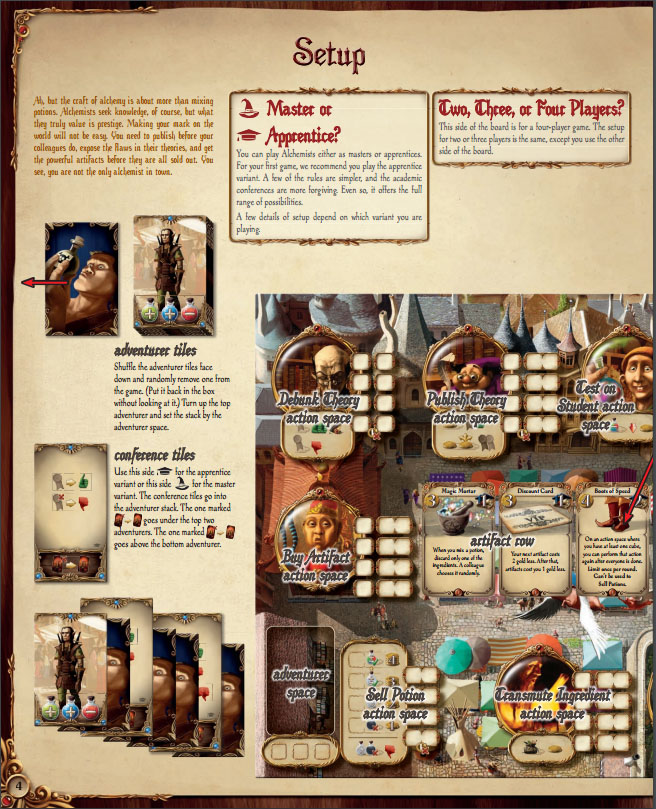How Will Our Rulebook Look Like Compared To Others?
Our game, on its own right now, is pretty easy to explain. But there’s a difference between explaining it to someone in person, and that person pulling out the rules from the box and hoping they don’t scratch their heads in confusion and putting the game away forever. Our game has some very unique concepts, so our rulebook has to be as well thought out as the game.
The best rulebooks go in-depth and explain every little mechanic about their game. It is chock-full of images, examples, and understandable language that fill the player’s head instantly. Without it, an intense session that goes wrong won’t have the right information to fix it, or have the stuff to get a game going to begin with.
I was looking at a few rulebooks, some at Phil’s suggestion and some on my own, to get started on how our rulebook should look like. Here are some that were effective for their games.
The strategy territory-building game use a lot of icons that make it easy for the player to remember what is going on. The setup and turn sections are explained plainly and in detail.
We’ve played this game before, and it is arguably one of the best rulebooks we’ve seen. After the regular rulebook part is finished, it has all the tiles, agents and lords used in the game, explained and divided by appendices.
The beauty in how this Kickstarter-funded game made its rulebook is simple. First, it’s barely a book – just two print-ready pages. Second, most of it is either written in lists to explain order or short blurbs that keep things clear.
For all intents and purposes, this game can be very complex at times. So, this is more of an example of how the writers did such a good job in creating a rulebook that made it as made it as accessible as possible. Players have a good start on first page from an image of the player area in the setup page. All the sections have strong headings that pop out and make it easy to find the portion you need.
The flavor text throughout is tongue-in-cheek and well placed. Texts are changed in color to get the reader’s attention, whether it be to read about a mechanic of the game, or one of the many examples described throughout the rulebook.
What makes this game’s rulebook stand out from the other is that I has a cool map-generation section. From there, players can use the hex tiles to configurations for different styles and numbers of players.
What Our Rulebook Needs
Our rulebook needs an appeal so that it isn’t just about understanding how the game works. It will need clear visuals of the cards and setup along with clear language about mechanics. It wouldn’t help putting in some flavor to get the theme across, either. As soon as we get this done, we won’t have to worry as much when start blind playtests.






